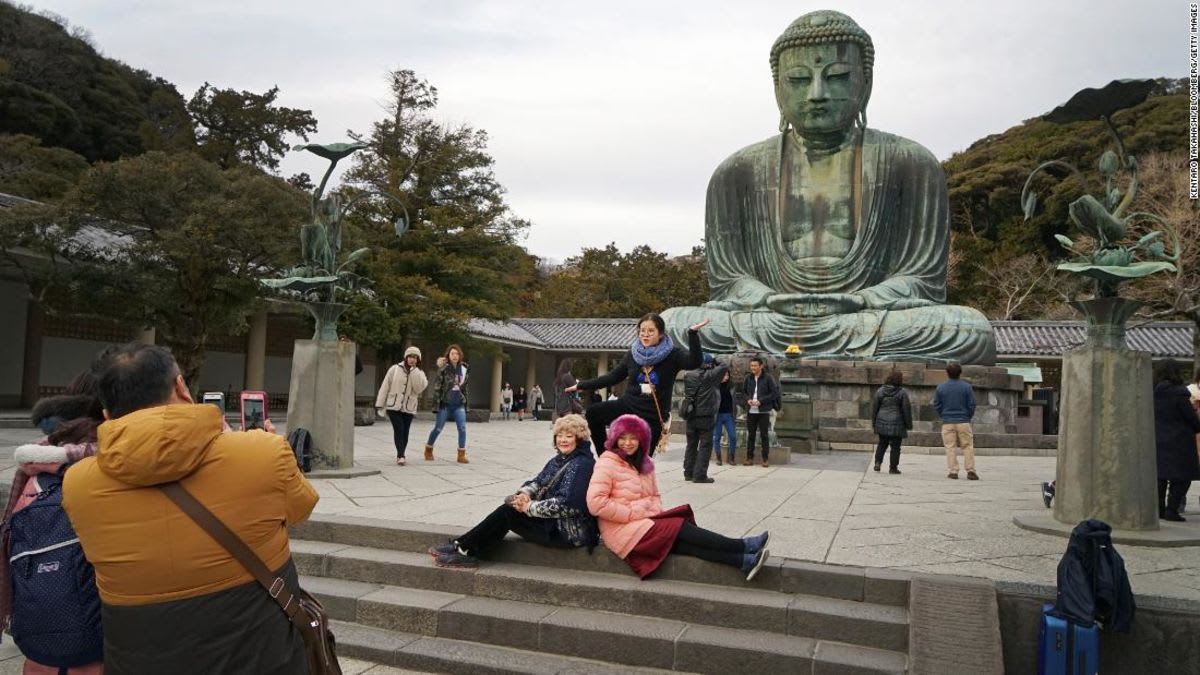دبي، الإمارات العربية المتحدة (CNN) – عادة ما يخوض السياح مغامرة جديدة بين شوارع المدينة أو المنطقة التي قرروا أن يزوروها وهم يتناولون الأطعمة الشعبية الشهية على الطرقات، ولكن ماذا لو كان هذا الأمر ممنوعاً؟
أصدرت مدينة كاماكورا، اليابانية، في أبريل/ نيسان، أمراً رسمياً يطلب من الزوار عدم تناول الطعام أثناء المشي، ولكن ما السبب؟
يعود سبب اتخاذ هذا القرار الذي قد يعده البعض غريباً، إلى مخاوف تكاثر القمامة الناتجة عن التغليف والتعبئة وبقايا الطعام، مما قد يجذب الحيوانات إلى المدينة ويتسبب بفوضى يتعين على المواطنين تكبد أعباء تنظيفها.
وقال ممثل من المدينة، المشهورة بمعابدها المعروفة وشواطئها الخلابة، لـCNN إن الأمر المنشور في المناطق العمومية، وضع لزيادة الوعي حول المسألة أكثر من كونه أمر يسعى إلى محاسبة السياح المخالفين له، مشيراً إلى أن الأشخاص الذين يخالفون الطلب لا يعاقبون بشكل عام.
وكان التركيز الكبير في مسألة الأكل في الشوارع، موجوداً في شارع كوماتشي- دوري، المليء بالمحلات والوجهة الرئيسية للعديد من الرحلات السياحية المحلية، إذ أشارت صحيفة "Japan Today"، إلى أن ما بين 50 إلى 60 الف شخص يزورون الشارع يومياً، وهو ما يجعل الأمر غريباً ، علماً بأن الشارع لا يزيد طوله عن 350 مترا.
ولا تتمحور المخاوف بشأن تناول الطعام أثناء المشي بزيادة بالفوضى أو القمامة فحسب، بل تتجذر أيضاً إلى نظرة المجتمع الياباني، الذي يرى بأن تناول الطعام أثناء المشي أو القيام بأي نشاطات بدنية توحى بأخلاق فقيرة وتعني بأن الشخص لا يحترم طعامه بالشكل اللائق.
هل هذا الاهتمام بالطعام أثناء المشي متمركز في اليابان فقط؟
على الرغم من غرابة هذه المخاوف بنظر البعض، إلا أنها لا تتمحور في الشارع الياباني فحسب، بل تتدفق إلى بلدان وشوارع أخرى مثل مدينة فلورنسا، في إيطاليا، حيث يمنع في جزء من تلك المدينة من تناول الطعام بين الأزقة أو على الطرق وأمام المحلات، ولكن السبب هنا لا يعود إلى مسألة نظافة فحسب بل لكون المنطقة مكتظة بشكل عام مما يصعب جلوس الأشخاص على الأرصفة قدرة المارة على التحرك.
وفي حالة مدينة فلورنسا، لا تأتي الأوامر للتوعية فحسب، بل قد يحصل مخالفوها على غرامة قدرها 581 دولار.
وتعمل بعض المدن في الدول الأخرى على إيجاد طريقة للحد من ظاهرة تناول الطعام أثناء المشي، حيث تحاول عاصمة تايلاند، بانكوك، معرفة ما يجب القيام به حيال أسواقها الخارجية وأكشاك الطعام المبعثرة، في الوقت الذي يطالب بعض السكان المحليين فيه بوضع بعض القيود أو حتى إغلاق بعض المحلات بسبب الحشود المتزايدة من السكان، بينما يظن آخرون بأن هنالك وسيلة أخرى لحل المشكلة دون عرقلة أعمال الآخرين.
